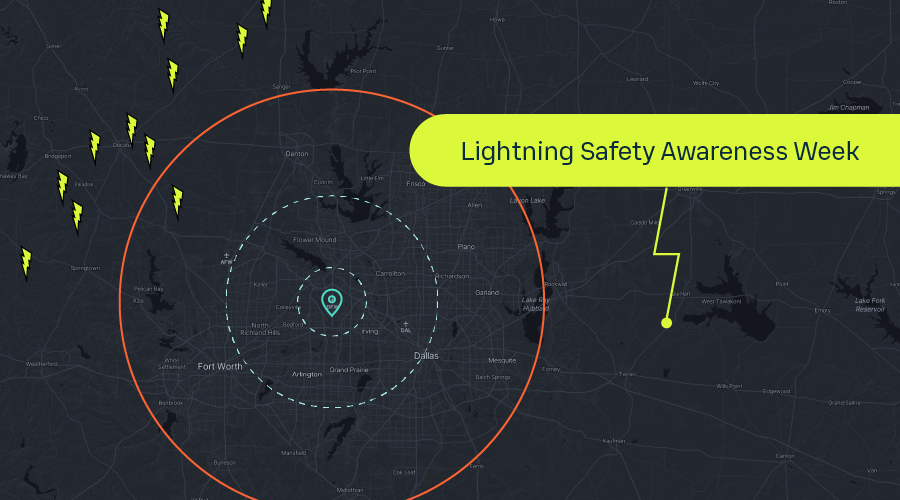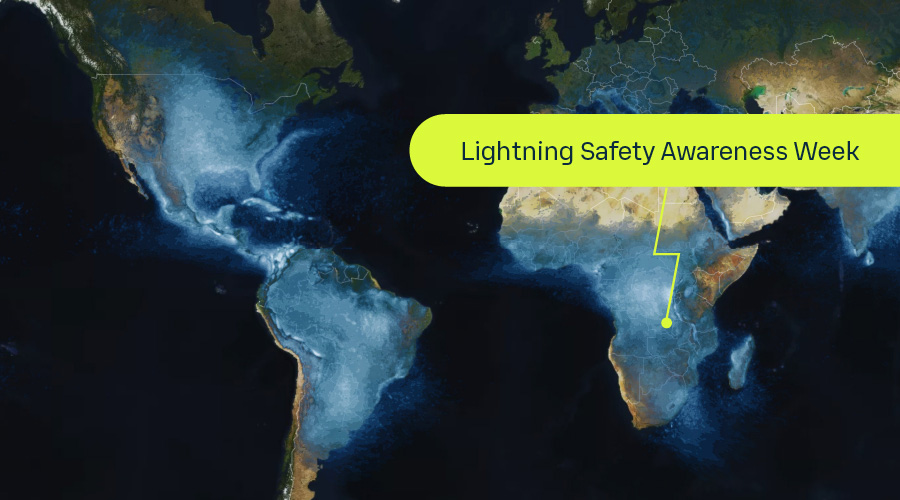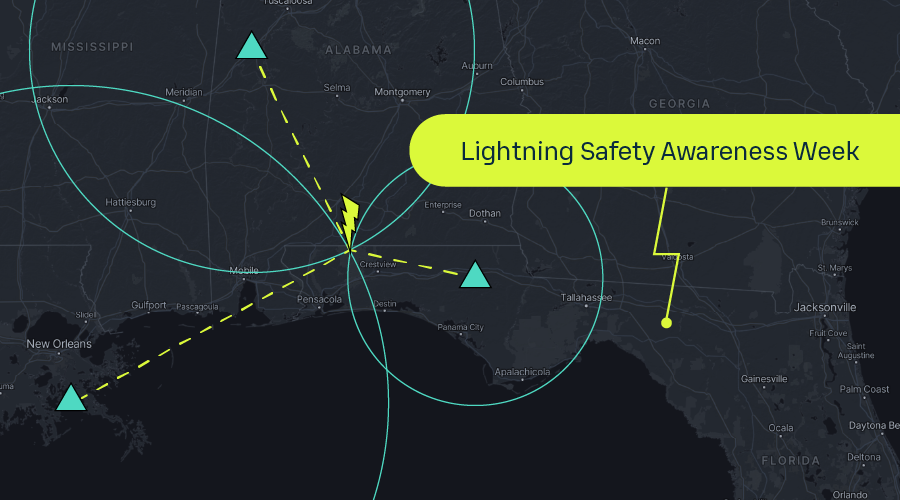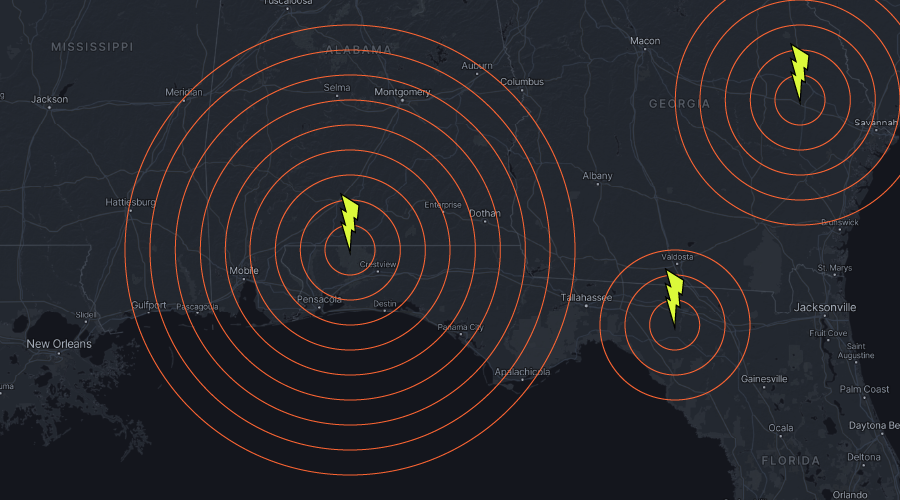There’s an old saying that lightning never strikes in the same place twice — which, in reality, is woefully incorrect. Lightning frequently does strike the same area more than once (try 100+ strokes for buildings like One World Trade Center!).
Most of us have also likely been told not to stand in large, open areas during lightning storms. This safety guideline IS one to follow: Lightning prefers to hit tall, isolated structures, whether that be a tree or a wind turbine. Tall, isolated structures also unfortunately include radio and television broadcasting towers—some of the tallest structures in the United States—which stand alone in big open fields and experience several direct lightning strikes a year.
Read Vaisala’s Annual Lightning Report to learn what buildings were struck the most in 2023.
What can we learn from these strikes?
Lightning damage varies nationwide in the United States. Vaisala quantifies total lightning density by the number of lightning events, which are lightning pulses in the clouds and strokes from clouds to the ground, per square kilometer. For reference, Central Park in New York City is a little over 3 square kilometers. Some areas in the southeastern US experience a whopping 100+ lightning events per square kilometer compared to only 1-2 events in the western states. Vaisala’s National Lightning Detection Network (NLDN) delivers invaluable insight on the nature of lightning and helps identify which structures are most susceptible to direct lightning strikes.
On June 2, 2024, unusually dense lightning activity — 58 strokes — was detected, all within 1 km of Perry Broadcasting radio tower in Caddo County, Oklahoma. This radio tower is the tallest structure in Oklahoma, and standing at 2000 feet (609.5 meters), it rivals New York City’s One World Trade Center by over 200 feet!
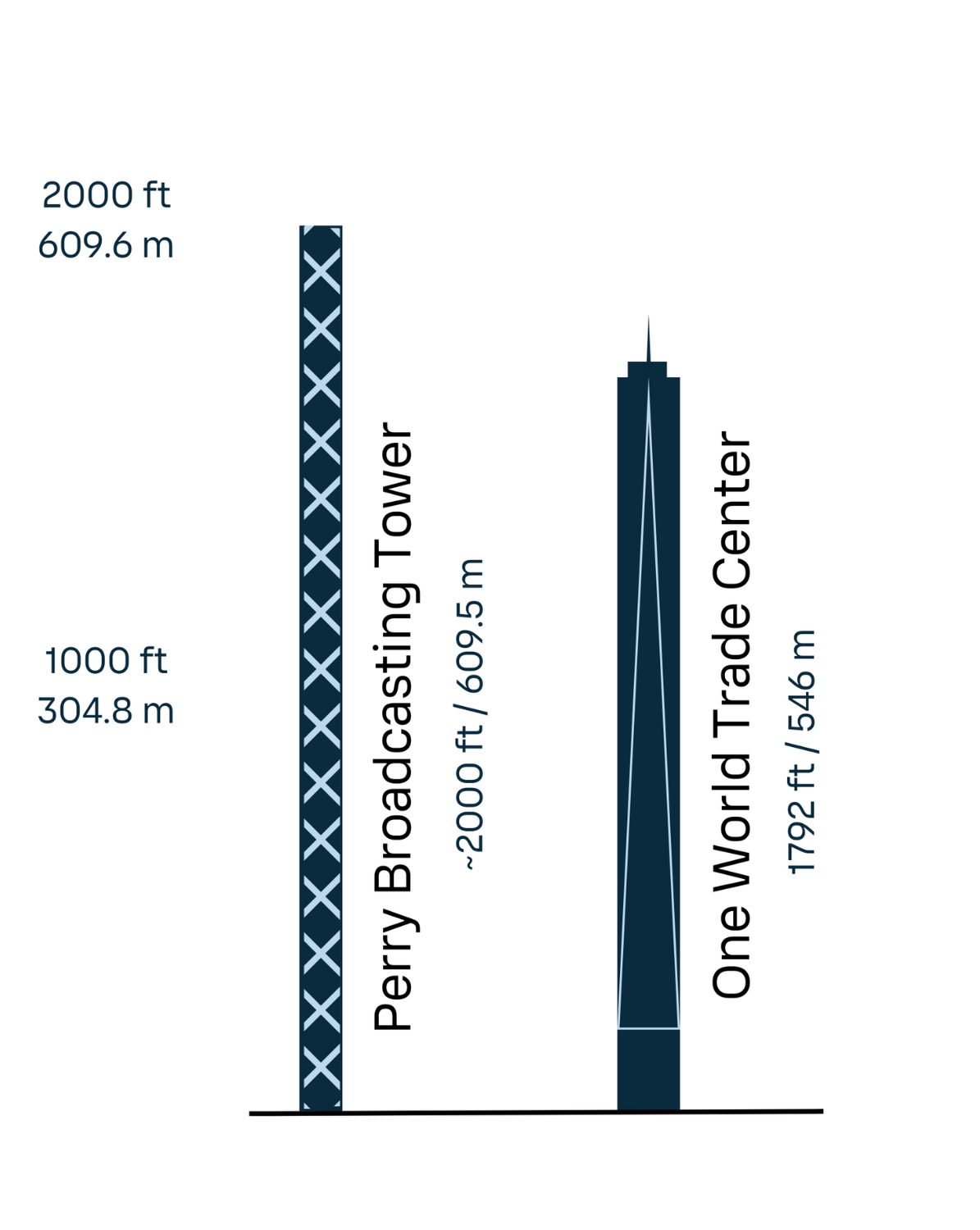
What is the difference between a lightning stroke and a lightning flash?
In cloud-to-ground lightning, you may have noticed that lightning sometimes appears to flicker. These flickers, called lightning strokes, are smaller, very fast discharges of electricity that move along a lightning path. A lightning strike is when all of these strokes follow the same lightning path to a single point or object. A lightning flash is a grouping of one or more of these strikes that occur in a single second.
Vaisala's lightning algorithms identified six distinct flashes, including five cloud-to-ground flashes that hit the tower, all occurring within roughly an hour of each other. Within the five cloud-to-ground flashes, there were 20 cloud-to-ground strokes. Case in point: Lightning does strike the same place — more than twice!
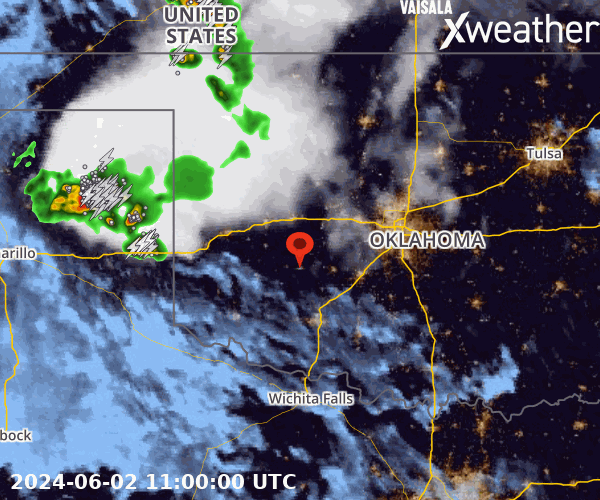
What happens when lightning strikes?
When lightning strikes a building, it can sometimes cause structural damage or disrupt its intended function. One of the flashes that hit the tower in this event carried more electrical energy than 96% of strikes catalogued in the past five years of Vaisala’s lightning detection, meaning it was more likely to melt metal. However, engineers design towers like this one to incorporate excellent lightning protection systems, allowing them to withstand many lightning strikes - but the strikes may temporarily interfere with radio signals.
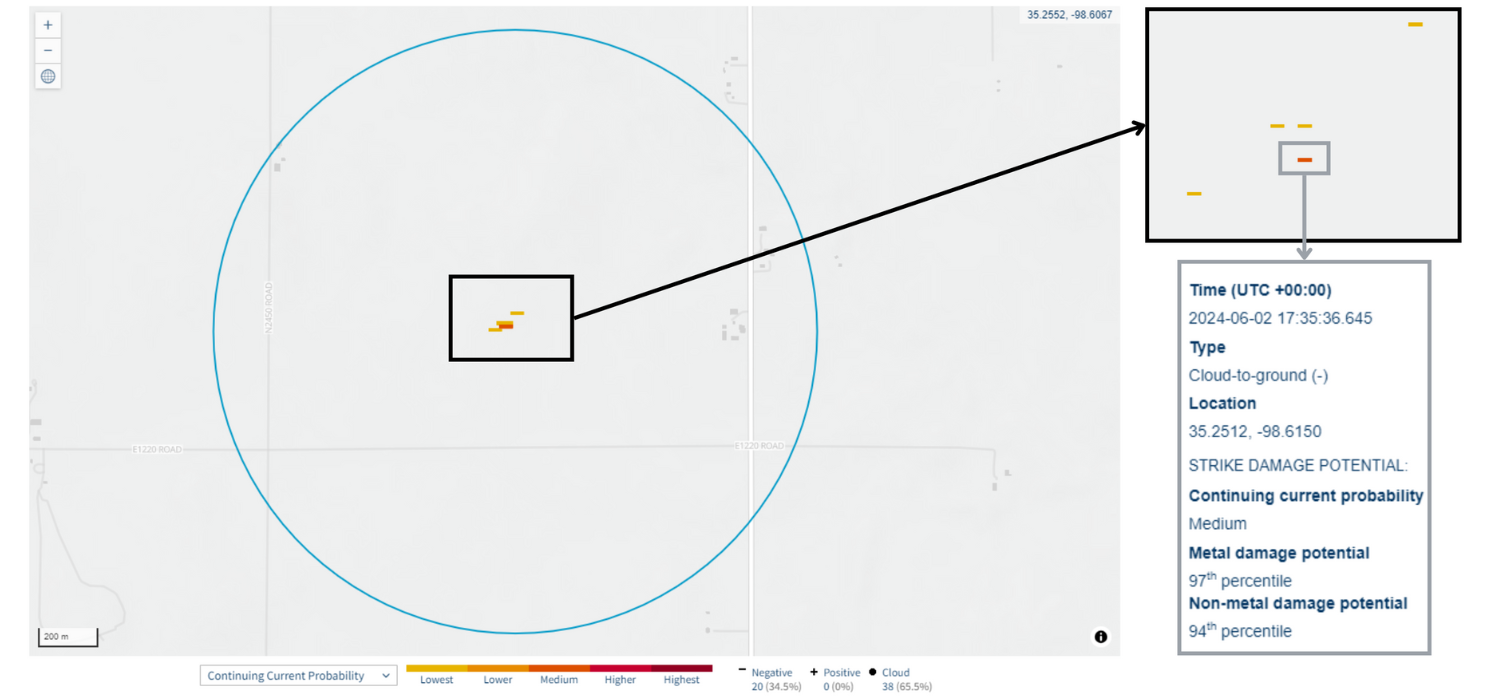
Unsurprisingly, this wasn’t the first time this colossal structure had been hit by lightning. In 2023, the Perry Broadcasting Tower was struck by 29 cloud-to-ground flashes over eight different months.
Lightning “hot spots” like this one provide valuable data to scientists and engineers and help continuously improve Vaisala’s detection capability by serving as a point of reference. For the 40 years of its existence, continuous improvements have been made to both sensor algorithms and technology, now offering a median location accuracy of just 84 m, which is less than the length of a football field.
Learn more about the evolution of Vaisala's lightning detection networks.
Xweather Protect gives you instant access to real-time severe weather and lightning monitoring, alerts, and all-clear notifications to protect your people, property, and assets. At Vaisala Xweather, we push the boundaries of technology to provide the most reliable large-scale lightning data in the world to help you build or bolster weather confidence to create a safer, more efficient society.

